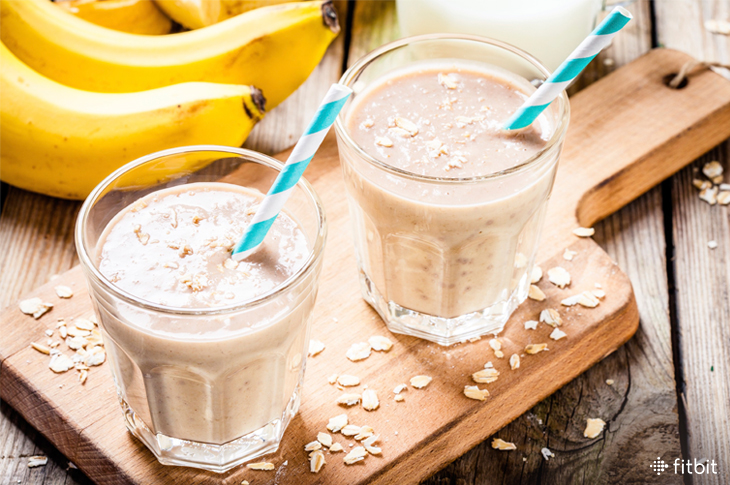
Good gut health is a hot topic these days, as researchers are learning more and more about the microbiota, or healthy bugs, in your gut. Hitting the right balance of “good” versus “bad” microorganisms boosts your immunity, regulates metabolism and appetite, helps you absorb vitamins and minerals, and may play a role in preventing diseases like obesity, heart disease, diabetes, and even cancer. New science is also looking for links to mood and behavior. The research is truly amazing, and scientists are only beginning to understand the 100 trillion microorganisms that are alive and kicking inside each of us.
You’ve probably heard about probiotics—there’s a lot of buzz around yogurt and supplements these days. But you may not be as familiar with prebiotics. One is a live, healthy microorganism, the other is its food—and the two work together to contribute to your health.
Probiotics are the “good” guys in your gut. They’re live microorganisms, which, if you eat enough of them, can provide benefits, like reducing antibiotic-associated diarrhea, improving IBS, and preventing the common cold. They’re present in certain fermented foods (like yogurt) that contain living cultures, and in dietary supplements. They include bacteria (such as Lactobacillus and Bifidobacterium) or yeast (such as Saccharomyces boulardii).
Do all fermented foods contain probiotics? Not necessarily. “For a product to be a called a probiotic, it needs to have been tested to determine the levels of living microorganisms, and also have been shown to be beneficial to the gut,” says Mary Ellen Sanders, Ph.D., an expert in probiotic microbiology. “Although fermented foods may contain living microorganisms, these microorganisms haven’t necessarily been proven to be beneficial. That’s not to say they aren’t good for us, they just haven’t got the science to back up the health claims just yet,” adds Sanders.
Prebiotics are non-digestible carbohydrates that act as food for the “good” guys, helping them grow and thrive. Prebiotics have been shown to improve calcium absorption, lower the glycemic index of foods, and reduce the risk of colorectal cancer. Prebiotics naturally exist in small amounts in certain foods, and they can be added to grocery items, like cereals and bread, and in dietary supplements. The most common types are inulin, fructo-oligosaccharides (FOS), galacto-oligosaccharides (GOS), oligo-fructose (OF), and chicory root. Basically, those are long words for specific types of fiber that the small intestine can’t digest, so they end up in the large intestine, where they’re broken down by the microorganisms living there.
There are two ways to get the “good” guys in your gut to flourish. Increase the population of “good” microbes by adding more, or feed the “good” guys that are already there. Looking for ways to get more probiotics and prebiotics? It’s all about what you eat. Here are some of the top sources.
| Top Sources of Probiotics | |
| Yogurt | Plain, unsweetened yogurt is one of the best sources. Check the label—you should see a note that it “contains live and active cultures.” |
| Probiotic juices and drinks | Lots of beverages offer probiotic benefits. Look for “live and active cultures,” and watch the sugar content! Small shots are great option if you don’t like yogurt. |
| Supplements | Supplements may have a higher potency than foods, and can be good to take after a course of antibiotics, which wipe out the good and bad bacteria in your gut. |
It gets tricky with fermented foods. Like yogurt, other fermented foods can contain living cultures—items like kefir, kombucha, fresh kimchi, fresh sauerkraut, and some cheeses, but unless they’ve been tested they can’t be called probiotics. And anything that has been pasteurized, filtered, or cooked, including most beer and wine, sourdough bread, and chocolate, no longer contains living cultures.
“A great way to determine whether a fermented food is likely to contain living cultures is where you find it in a supermarket,” says Robert Hutkins, Ph.D., author of Microbiology and Technology of Fermented Foods. “If it’s stored in the fridge, it’s very likely to contain living cultures. If you are buying it off a shelf, it’s been heat-treated, and is unlikely to contain any living cultures.”
| Top Sources of Prebiotics | |
| Vegetables | Leeks, asparagus, chicory, Jerusalem artichokes, artichokes, garlic, onions |
| Legumes | Soy beans |
| Fruit | Bananas |
| Grains | Wheat, oats |
| Supplements | Prebiotic supplements can deliver more than that found naturally in food. |
| Foods with added prebiotics | Prebiotics can be added to foods like yogurt, cereal, bread, and drinks. Check the ingredients for FOS, inulin, GOS, or TOS (transGOS). |
By regularly eating and enjoying these foods, you’re nurturing your own internal bacterial ecosystem, and helping the friendly microorganisms flourish. “There’s no question diet influences our gut microbiota,” says Sanders. “Following the US Dietary Guidelines, focusing on foods with probiotics, as well as whole grains, fruits and vegetables, and other fiber-rich foods, but not too much protein, can help support a healthy microbiota,” she says. So add some probiotics, prebiotics, and fermented foods to your weekly shopping list. You’ll be encouraging a healthier gut, and a healthier you.
This article is not intended to substitute for informed medical advice. You should not use this information to diagnose or treat a health problem or condition. Always check with your doctor before changing your diet, taking supplements, or starting a new fitness routine.
Do you eat certain foods to support a healthy, happy gut? Join the conversation below.
This information is for educational purposes only and is not intended as a substitute for medical diagnosis or treatment. You should not use this information to diagnose or treat a health problem or condition. Always check with your doctor before changing your diet, altering your sleep habits, taking supplements, or starting a new fitness routine.

Can you provide suggestions of a good Pre & Probiotic outside of the food options.. For someone with Extreme Dairy, Soy & Gluten allergies?